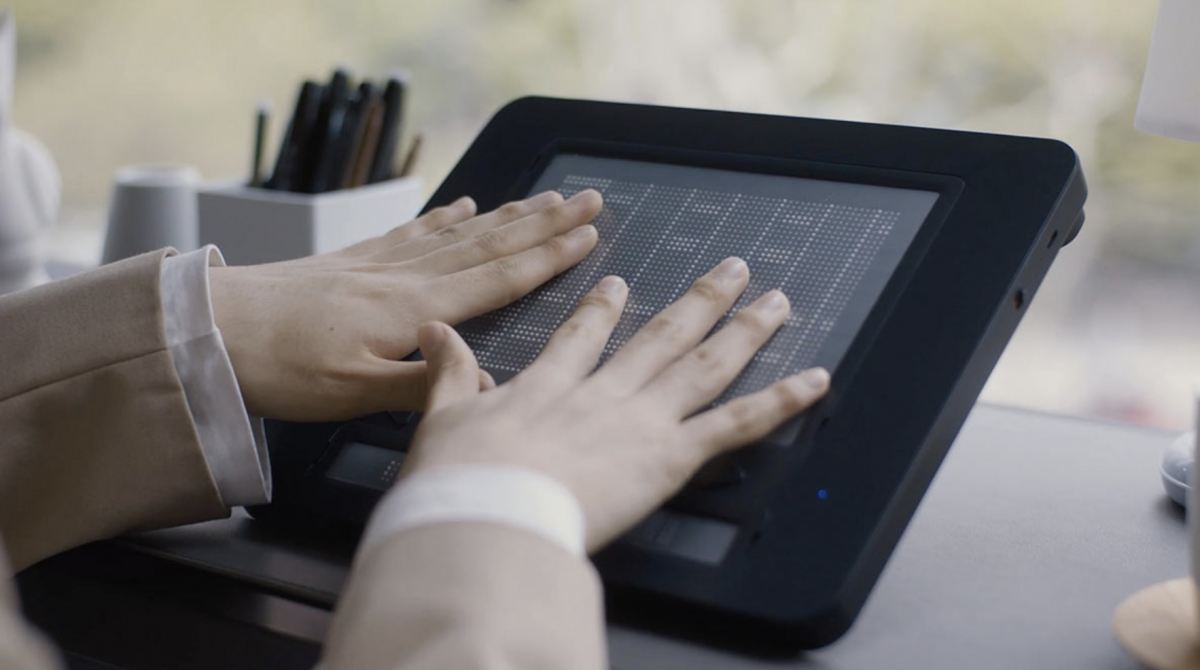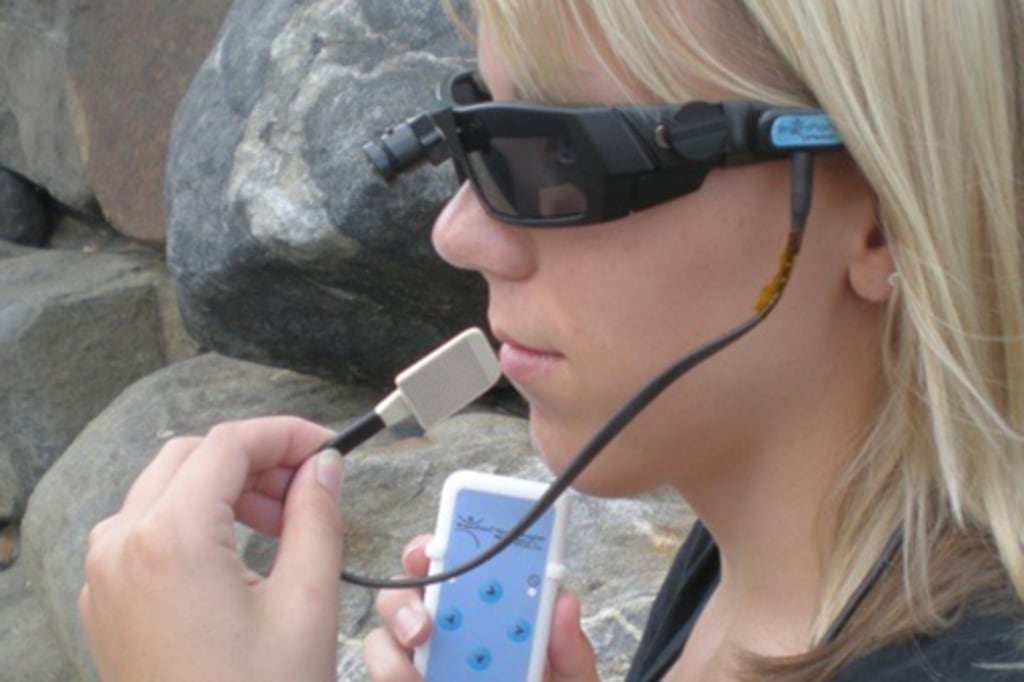Screen Readers for the Blind: Essential Solutions for Digital Access
Wiki Article
Empowering Independence With Assistive Innovation for the Blind
The integration of assistive modern technology into the lives of individuals with visual disabilities represents a considerable innovation in promoting independence and self-sufficiency. From cutting-edge display viewers to innovative wise walking canes, these devices not only enhance day-to-day navigating and communication however likewise encourage customers to involve meaningfully in numerous aspects of life. As we explore the myriad advantages and real-world applications of these innovations, it becomes important to check out the underlying variables that add to their efficiency and the potential for future growths in this crucial field.Overview of Assistive Innovation

The growth of assistive innovation is grounded in principles of inclusivity and empowerment. Developments in software, hardware, and sensory improvements offer individuals with alternatives customized to their specific needs. From screen viewers that transform text to speech, to responsive gadgets that convey details through touch, these tools change the means people engage with their environments.
In addition to useful applications, assistive innovation fosters higher social inclusion and participation in different markets, including education and learning and work (Screen readers for the blind). As r & d proceed to develop, the potential for assistive innovation to better improve the lives of visually damaged individuals stays encouraging, leading the method for a more equitable culture where everyone can grow
Sorts Of Assistive Devices
A range of assistive devices have arised to support people with aesthetic disabilities, each designed to meet details demands and boost day-to-day functioning. These tools range from low-tech remedies to state-of-the-art advancements, providing varied alternatives for users.Low-tech devices consist of magnifiers and large-print materials that aid in analysis and writing. Braille tools, such as Braille slates and styluses, allow responsive analysis and interaction. Positioning and flexibility help, like white canes, help users navigate their environment securely.
On the greater end of the range, electronic zoom systems and screen readers provide substantial support. Electronic magnifiers permit customers to expand text and pictures on screens, while display readers transform digital content into manufactured speech, facilitating access to information on computers and mobile phones.
Smartphone applications also play a vital function, providing features like message acknowledgment and navigation support. Wearable technology, such as smart glasses geared up with enhanced reality, is emerging as an appealing tool to boost situational recognition.
Benefits of Assistive Technology
The assimilation of assistive technology significantly improves the lifestyle for people with aesthetic impairments. These modern technologies encourage individuals by promoting independence, allowing them to browse their atmospheres more properly and do daily jobs with better convenience. Screen viewers and zoom software permit people to gain access to digital info, fostering expert and academic possibilities that might have previously been out of reach.In addition, assistive gadgets such as wise walking canes and GPS applications give real-time navigation aid, improving flexibility and safety and security. This enhanced autonomy not just improves self-confidence yet also urges social engagement, enabling customers to participate more completely in their areas.
Assistive technology also helps with communication, assisting customers get in touch with others via voice recognition and text-to-speech applications. This capacity is vital for maintaining relationships try this site and accessing vital info.
Furthermore, the modification alternatives readily available with many assistive innovations guarantee that individuals can tailor gadgets to their particular requirements, additionally improving functionality and efficiency. In general, the benefits of assistive technology for individuals with aesthetic problems are profound, promoting a more inclusive culture where every person can pursue their desires and objectives.
Case Researches and Success Stories
Highlighting the transformative impact of assistive innovation, various situation studies show just how individuals with aesthetic problems have effectively incorporated these tools right into their lives. One engaging instance includes an university pupil who used display analysis software to browse academic products and on the internet sources effectively. This modern technology not just facilitated her education however also improved her confidence in getting involved in discussions and group jobs.One more case research includes an expert who uses a mobile phone application made for navigating and item acknowledgment. By utilizing this application, he has restored autonomy in both his personal and workplace, permitting him to commute independently and engage with associates a lot more effectively.
Additionally, a retiree shared her experience with braille e-readers, which allowed her to access a substantial variety of literary works and stay gotten in touch with her neighborhood with book clubs.
These success tales underscore the vital duty of assistive innovation in promoting independence, improving lifestyle, and promoting social assimilation for people with aesthetic disabilities (Mobility aids for visually impaired users). By embracing these ingenious devices, users can overcome difficulties and seize possibilities that add to their professional and individual fulfillment

Future Fads in Assistive Innovation
Development in assistive technology is poised to redefine the landscape of support for people with aesthetic problems. Emerging fads stress the assimilation of man-made knowledge (AI) and artificial intelligence, which boost the functionality of devices that help with navigation and details ease of access. For example, AI-driven applications are now capable of interpreting aesthetic information in real-time, enabling customers to engage with their environment extra individually.In addition, the growth of wearable innovation is progressing quickly. Smart glasses geared up with enhanced reality (AR) can provide audio descriptions of surroundings, changing exactly how customers engage with public spaces. These devices not only advertise freedom but additionally foster social incorporation.
Furthermore, the Web of Things (IoT) is making homes smarter, permitting seamless connection in between daily appliances and assistive tools. This connection encourages customers by enabling automated reactions and voice-activated controls customized to specific demands.
Verdict
In verdict, assistive modern technology plays a critical duty in encouraging people with visual impairments by improving their independence and engagement with their surroundings. The diverse variety of devices and applications offered not only helps with navigation and interaction read more yet also advertises social integration and opportunities for individual and expert growth. As improvements continue in this field, the possibility for enhancing the lifestyle for those with aesthetic impairments will certainly increase, cultivating greater freedom and empowerment..png)
Report this wiki page